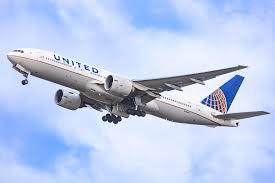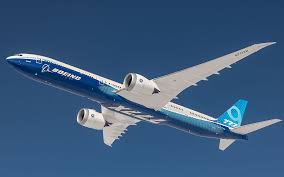By Justin Foster
Boeing is one of the two largest commercial aircraft manufacturers in the world. The Renton, Washington-based business segment falls under The Boeing Company, a global aerospace giant. Even so, the commercial aviation business segment, called Boeing Commercial Airplanes, employs nearly 50,000 employees around the world. This includes the locations of its major manufacturing facilities in Everett, Washington, and Charleston, South Carolina.
The company was first founded in July 2016, over 100 years ago. Since then, Boeing has grown to offer a diverse variety of airliners. The company found initial success with the Boeing Model 40A, one of the company’s first widely successful commercial aircraft. Boeing also introduced the Boeing 707 in the late 1950s, which helped drive the commercial aviation market into the jet age. Other popular aircraft that Boeing has produced include the 737 family, one of the most successful narrowbody families in the world, and the Boeing 747, one of the most notable commercial aircraft in the world. However, one of the most successful aircraft that Boeing has produced is the 777 series. Let’s take a closer look at this widebody aircraft, as well as why Boeing eventually ceased production of its most popular variant, the 777-300ER.

Boeing Ceases Production Of The 777-300ER
The 777 series is often considered to be one of Boeing’s most successful lines of aircraft. The Boeing 777-300ER is the best-selling variant of the family, with over 800 aircraft delivered, and has continued to serve as a backbone of several long-haul fleets around the world. However, Boeing has officially ceased production of the 777-300ER, marking the end of an era for one of its most successful widebody commercial airliners.
In the early 2000s, Boeing ceased production of the 777-300ER as it began to transition toward newer and more advanced aircraft in the 777 family. In general, the 777-300ER will be succeeded by the 777-9, part of the yet-to-be-certified 777X family. This next-generation family of aircraft incorporates major technological advancements, including more powerful engines, a newly developed composite wing, and a modernized cabin.
Additionally, several market changes affected the aircraft’s sales, eventually speeding up the decision to halt production of the aircraft. By the late 2010s, most major airlines had already received their 777-300ER aircraft. Due to the state of the commercial aviation market, there were few new customers willing to place orders for the aging aircraft. Most airlines were shifting toward smaller and more flexible aircraft, especially after the COVID-19 pandemic disrupted long-haul travel. With diminished demand for very large passenger jets, Boeing focused on maintaining production of the 777 freighter while winding down passenger variants.

The Development Of The Boeing 777 Series
In the late 1980s, Boeing recognized a gap in its production line, specifically between the smaller 767 family and the large widebody Boeing 747. At that time, airlines were looking for a long-range twin-engine aircraft that was capable of carrying large passenger loads with lower operating costs than four-engine airliners. Because of this, Boeing officially launched the 777 program in the early 1990s.
After the launch of the program, Boeing formed a group composed of eight international airlines to help develop this aircraft.
Boeing received input from these airlines on all major design decisions, including cabin layout to cockpit design. This input helped the Boeing 777 become one of the most widely adopted widebody aircraft of all time.
Additionally, the 777 represented the first Boeing commercial aircraft to be designed entirely using computer-aided design (CAD) software. This allowed Boeing engineers to create full-scale digital models of the aircraft, saving time and expenses while also reducing the need for constant rework during production. Boeing was confident in the development of the 777 series, even opening a new production line at its Everett, Washington, facility.
The Entry Of The Boeing 777 Into Commercial Service
The first production Boeing 777 was rolled out in April 1994. This aircraft conducted its maiden flight on June 12, 1994, kicking off the extensive flight testing program. However, the 777 was awarded type certification by both the Federal Aviation Administration (FAA) and the European Joint Aviation Authorities (JAA) on April 19, 1995.
The first production Boeing 777 was delivered to United Airlines on May 15, 1995. United Airlines introduced the 777 into service on June 7, 1995. The airline flew this aircraft, registered as N777UA, from London Heathrow International Airport (LHR) in the UK to Washington Dulles International Airport (IAD) in Washington, D.C.
Since its introduction, Boeing has delivered over 1,750 total 777 aircraft to airlines around the world, making it the best-selling widebody aircraft of all time. This includes all variants of the aircraft, including the 777-200, the 777-200ER, and the 777-300, which fall into the first generation, as well as the 777-300ER, the 777-200LR, and the 777F, which fall into the second generation of the 777 family.
The Boeing 777 Second Generation
Boeing saw immediate success with the first few variants of the 777s. Because of this, the plane maker began developing a second generation of aircraft in the 777 family. Specifically, in the late 1990s, airlines were requesting an aircraft that was capable of flying farther and more efficiently than the first generation of the Boeing 777.
Boeing launched the 777-300ER program in 2000, followed by the 777-200LR in 2002. Both of these second-generation widebody aircraft incorporated major upgrades. This includes several structural improvements, aerodynamic upgrades, and the new General Electric GE90 engine, which was the most powerful turbofan engine ever built.
The 777-300ER made its first flight in February 2003 and entered commercial service with Air France in April 2004. It quickly became the most popular model in the 777 lineup, due to its long range, high capacity, and twin-engine efficiency. Because the aircraft could fly so far using only two engines, the 777-300ER allowed many airlines to replace aging four-engine jets while reducing fuel costs and emissions.
The 777-200LR was introduced slightly later, entering commercial service with Pakistan International Airlines (PIA) in 2005. This aircraft had additional fuel capacity and was designed for ultra-long-haul routes. Together, the 777-300ER and 777-200LR defined the second generation of the 777 family, helping to cement this series of aircraft as one of the most popular widebody aircraft of all time.
Major Design Features And Performance Specifications Of The Boeing 777 Series
The design of the Boeing 777 was ahead of its time, developed using advanced software and technologies. For example, the Boeing 777 was the first commercial aircraft produced by Boeing to utilize fly-by-wire flight controls. Even so, Boeing elected to use conventional yokes in the cockpit instead of sidestick controllers like many other fly-by-wire aircraft.
The first generation of Boeing 777 aircraft were powered by several engine options. This includes the General Electric GE90, Pratt & Whitney PW4000, or Rolls-Royce Trent 800 engines. Each of these engines could provide the aircraft with up to 98,000 pounds of thrust.
However, the second-generation 777 aircraft required greater thrust, so Boeing chose the General Electric GE90-115B to power the series. This engine could provide the aircraft with over 115,000 pounds of thrust, helping the second-generation 777 aircraft achieve the following performance specifications:
| Specification | 777-300ER | 777-200LR |
|---|---|---|
| Length | 242 feet four inches | 209 feet one inch |
| Height | 60 feet eight inches | 61 feet one inch |
| Wingspan | 212 feet seven inches | 212 feet seven inches |
| Maximum takeoff weight (MTOW) | 775,000 pounds | 766,000 pounds |
| Typical cruise speed | 482 knots (554 miles per hour) | 482 knots (554 miles per hour) |
| Range | 7,370 nautical miles (8,480 miles) | 8,555 nautical miles (9,845 miles) |
| Service ceiling | 43,100 feet | 43,100 feet |
The Next Step For The Boeing 777 Family

As Boeing recently halted production of the most popular variant of the 777 series, the 777-300ER, the company will look to soon offer a new widebody in its place. The next major step for the plane maker is the introduction of the 777X, a next-generation widebody aircraft. This aircraft will build on the proven success of the 777 family, while also incorporating cutting-edge technology and innovation to meet the evolving demand of the commercial aviation market.
Boeing will introduce the 777X aircraft with a longer, more aerodynamically efficient wing than earlier models. The aircraft’s wing will be made from advanced composite materials and will feature folding wingtips, which allow a wider wingspan in flight yet still fit into existing airport gates. The Boeing 777X will also be powered by the new General Electric GE9X engine, the largest and most powerful turbofan engine ever built.
While the 777X program has experienced some delays due to development challenges and the impacts of the global COVID-19 pandemic, Boeing remains committed to bringing the aircraft into service soon. Several airlines around the world are expected to adopt the soon-to-be-certified 777X as the new flagship of many fleets. This will continue the 777 family’s legacy of combining range, capacity, and efficiency into the next generation of commercial airliners.
culled from simpleflying.com





